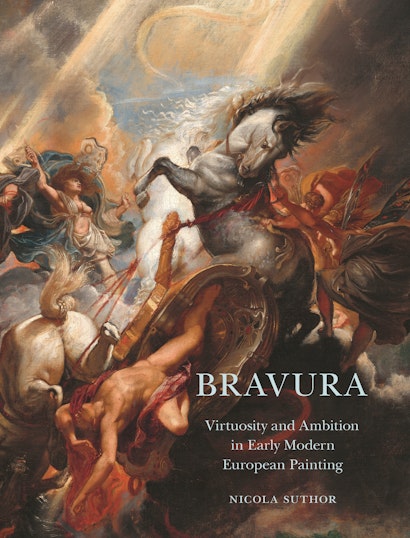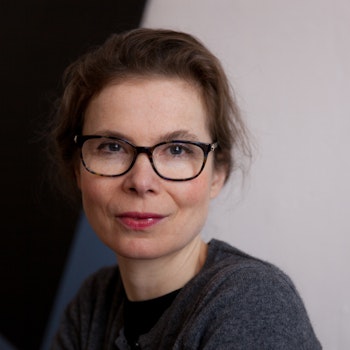The painterly style known as bravura emerged in sixteenth-century Venice and spread throughout Europe during the seventeenth century. While earlier artistic movements presented a polished image of the artist by downplaying the creative process, bravura celebrated a painter’s distinct materials, virtuosic execution, and theatrical showmanship. This resulted in the further development of innovative techniques and a popular understanding of the artist as a weapon-wielding acrobat, impetuous wunderkind, and daring rebel. In Bravura, Nicola Suthor offers the first in-depth consideration of bravura as an artistic and cultural phenomenon. Through history, etymology, and in-depth analysis of works by such important painters as Franҫois Boucher, Caravaggio, Francisco Goya, Frans Hals, Peter Paul Rubens, Tintoretto, and Diego Velázquez, Suthor explores the key elements defining bravura’s richness and power.
Suthor delves into how bravura’s unique and groundbreaking methods—visible brushstrokes, sharp chiaroscuro, severe foreshortening of the body, and other forms of visual emphasis—cause viewers to feel intensely the artist’s touch. Examining bravura’s etymological history, she traces the term’s associations with courage, boldness, spontaneity, imperiousness, and arrogance, as well as its links to fencing, swordsmanship, henchmen, mercenaries, and street thugs. Suthor discusses the personality cult of the transgressive, self-taught, antisocial genius, and the ways in which bravura artists, through their stunning displays of skill, sought applause and admiration.
Filled with captivating images by painters testing the traditional boundaries of aesthetic excellence, Bravura raises important questions about artistic performance and what it means to create art.
Nicola Suthor is professor of art history at Yale University. She is the author of Rembrandt’s Roughness (Princeton).
"Suthor invigorates this subject in myriad ways, not least by the sheer verve of her writing and the ambition of her project. The book is itself a bravura performance, galloping through several centuries of European art history with considerable wit and erudition."—Alexander Marr, Apollo Magazine
"[A] pioneering book. . . . this brilliant and well-illustrated book confirms that bravura was one of the most cognitively demanding techniques of Renaissance painting. The brilliance of Suthor’s analysis lies in her fresh terminology and perceptive language of description of even the smallest and most easily overlooked details of composition, and in her critical ability to relate such intricacies to larger issues taken up in paintings and in criticism. She writes in engaging, precise language, and makes persuasive connections with contemporary art criticism and modern aesthetics and cultural theory."—Goran Stanivukovic, Renaissance and Reformation
"Bravura surveys the breadth of meaning that bravura conveys, probing the subtleties of the concept from multiple viewpoints. . . . This breadth, which makes it possible to see patterns and similarities over centuries and national boundaries, is refreshing in our age of narrowly defined specialist studies and helps us see the consistency over longer periods in European art, something that is often lost in our focus on differences. . . . [Suthor’s] skill at integrating theory and practice is commendable and provides a service to the theorists and biographers who were artists themselves, reminding those who would study paintings in isolation from the ideas valued by their makers that they do so at serious peril."—Janis Bell, Renaissance Quarterly
"I learned a great deal from Bravura, enjoyed [Suthor’s] in-depth descriptions of paintings, and found myself entertained by the many anecdotes quoted. Her skill at integrating theory and practice is commendable and provides a service to the theorists and biographers who were artists themselves."—Janis Bell, Renaissance Quarterly
"Traveling easily between art criticism and artworks, this clearly written book explores the theoretical concepts and artistic manifestations of bravura in early modern art. Suthor weaves together an impressive collection of quotes and anecdotes pertaining to bravura—from ancient texts and fencing manuals to early modern writings—and seamlessly ties these to specific paintings."—Jodi Cranston, Boston University
"Bravura presents an exciting and timely look at the technique, style, visual power, and mythic creation of individual artists. Rigorously framed, this memorable book is important for many reasons: it is expansive, multinational and multilingual, and textually rich. This is an original, vital, and essential addition to the literature."—Philip Sohm, University of Toronto


